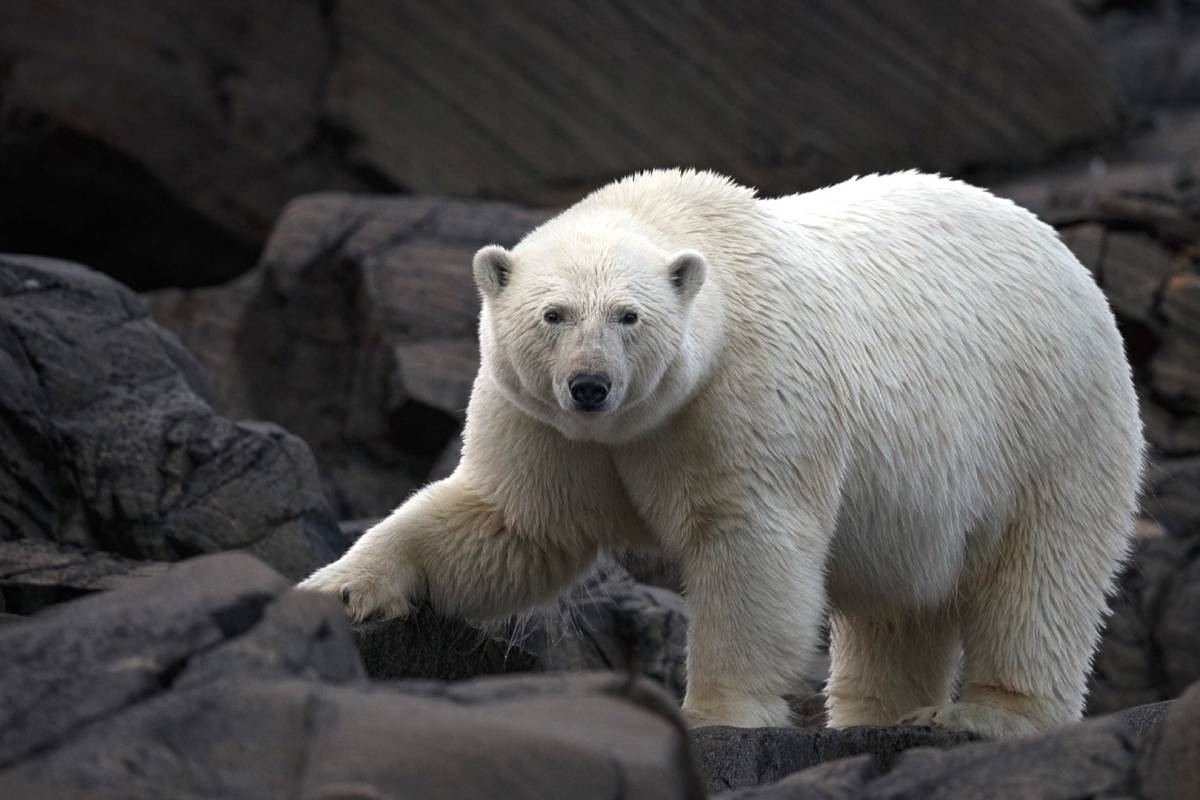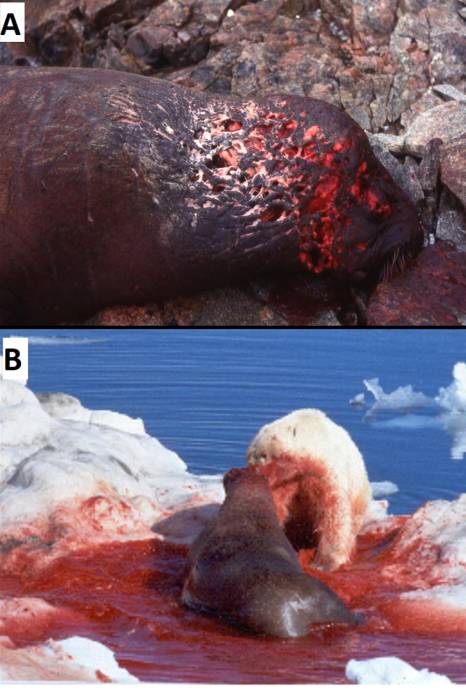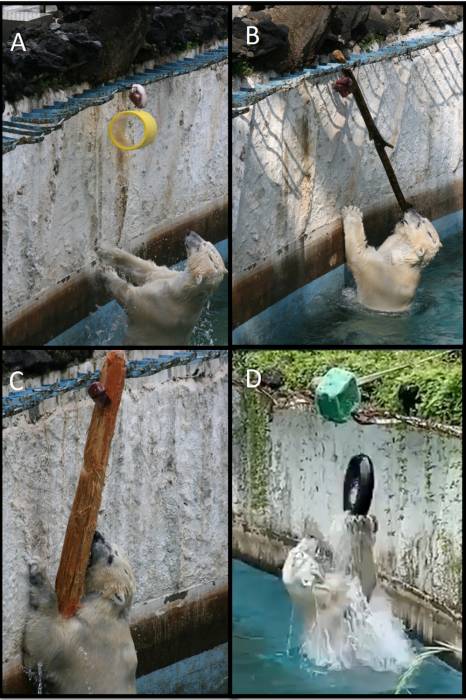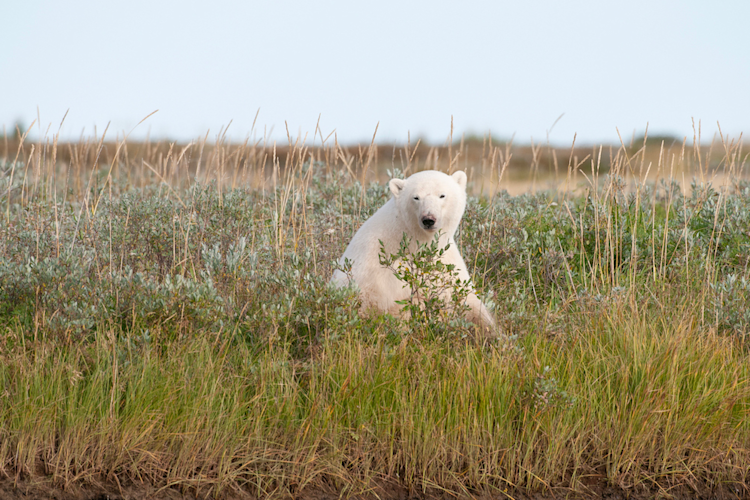Insights from a zoo bear
When trying to understand a polar bear’s ability to conceptualize a new behavior needed to access a possible food source such as a walrus, consider a young male bear named GoGo in the Municipal Tennoji Zoological Gardens in Osaka, Japan. He was observed inventing and then learning to use tools. Initially, the zoo staff were simply trying to improvise some enrichment to keep him from becoming bored and possibly developing repetitive stereotyped behavior.
First, the staff hung a piece of meat about three meters above GoGo’s pool—which was too high for him to grasp— simply to provide stimulation and distract his attention. Initially he tried to get to the meat by jumping but was unsuccessful. However, within a month, he had invented two “tools” from toys placed in his exhibit for his entertainment. First, he began to throw a short hard piece of plastic pipe at the meat until he knocked it down (Figure 3a). Then he picked up the remains of a tree branch to slap the meat off the hook (Figure 3b). At first, when using either of these methods, it took him a couple of hours to get the meat, according to zoo staff, but soon he was able to retrieve the meat in only five minutes! Later he began to use a much larger piece of wood (Figure 3c), but as time went on, his preferred tool became a dense object, similar to the initial pipe, which he learned to throw accurately, using both front paws to direct it, much like shooting a basketball (Figure 3d).
Because experienced Inuit hunters are known to be reliable observers of wildlife, their accounts of polar bears using tools to hunt walrus are plausible. This conclusion is supported by the direct observations of GoGo teaching himself to launch a projectile accurately in a totally novel situation.
Dr. Ian Stirling is an adjunct professor with the University of Alberta and a research scientist emeritus with Environment and Climate Change Canada. He is also a long-time scientific advisor to Polar Bears International.
REFERENCES
Born, E.W., Heilmann, A., Kielsen Holm, L., Laidre, K.L. and Iversen, M. 2017. Walruses in West and Northwest Greenland – An interview survey about the catch and the climate. Monographs on Greenland Vol. 355– Man and Society Vol. 44. Museum Tusculanum Press, Copenhagen. 256 pp.
Fabricius, O. 1780. Fauna Groenlandica, pp. 22-24 Ursus maritimus. J.G. Rothe. Hafniae et Lipsiae, xvi+452
Hall, C.F. 1865. Arctic Researches and Life among the Esquimaux being the Narrative of an Expedition in Search of Sir John Franklin in the Years 1860, 1861 and 1862. Harper & Brothers, Publishers. New York, 595 p plus maps.
Rasmussen, K., 1925. Fra Grønland til Stillehavet. Rejser og Mennesker fra 5. Thule-Expedition 1921-1924 (From Greenland to the Pacific Ocean. Travels and people of the 5th Thule-expedition 1921-1924). Gyldendalske Boghandel. Nordisk Forlag. København 1925. Vol I. 462 p. (In Danish).
Stirling, I., Laidre, K.L., and Born, E.W. 2021. Do Wild Polar Bears (Ursus maritimus) Use Tools When Hunting Walruses (Odobenus rosmarus)? Arctic 74:75–187



















